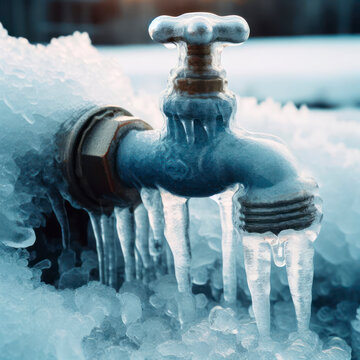This post in the next paragraphs about Prevent Frozen Pipes is without a doubt motivating. Try it and draw your own conclusions.

Winter can wreak havoc on your pipes, especially by freezing pipes. Below's how to prevent it from taking place and what to do if it does.
Introduction
As temperature levels drop, the threat of frozen pipelines increases, potentially leading to expensive fixings and water damages. Recognizing exactly how to stop icy pipes is vital for homeowners in chilly environments.
Avoidance Tips
Insulating susceptible pipelines
Wrap pipes in insulation sleeves or utilize warm tape to shield them from freezing temperature levels. Focus on pipes in unheated or exterior areas of the home.
Heating methods
Maintain indoor rooms properly heated, especially areas with plumbing. Open cabinet doors to permit cozy air to flow around pipelines under sinks.
Just how to recognize icy pipes
Search for decreased water flow from taps, uncommon odors or noises from pipelines, and noticeable frost on revealed pipes.
Long-Term Solutions
Structural changes
Take into consideration rerouting pipes away from outside walls or unheated areas. Include extra insulation to attic rooms, cellars, and crawl spaces.
Upgrading insulation
Buy premium insulation for pipes, attic rooms, and walls. Correct insulation helps keep constant temperatures and lowers the danger of icy pipes.
Safeguarding Exterior Plumbing
Yard hoses and outside taps
Disconnect and drain pipes yard tubes before wintertime. Install frost-proof spigots or cover outside taps with insulated caps.
Comprehending Icy Pipelines
What creates pipes to freeze?
Pipes ice up when exposed to temperatures listed below 32 ° F (0 ° C) for expanded durations. As water inside the pipelines ices up, it increases, putting pressure on the pipe walls and potentially causing them to burst.
Risks and problems
Icy pipes can cause water system disturbances, residential or commercial property damage, and expensive repairs. Ruptured pipelines can flood homes and trigger substantial structural damage.
Indicators of Frozen Water Lines
Determining frozen pipelines early can avoid them from rupturing.
What to Do If Your Pipes Freeze
Immediate activities to take
If you believe frozen pipelines, maintain faucets open up to eliminate pressure as the ice thaws. Utilize a hairdryer or towels taken in hot water to thaw pipelines slowly.
Conclusion
Protecting against frozen pipelines requires aggressive steps and fast reactions. By recognizing the causes, indications, and safety nets, house owners can protect their plumbing throughout winter.
5 Ways to Prevent Frozen Pipes
Drain Outdoor Faucets and Disconnect Hoses
First, close the shut-off valve that controls the flow of water in the pipe to your outdoor faucet. Then, head outside to disconnect and drain your hose and open the outdoor faucet to allow the water to completely drain out of the line. Turn off the faucet when done. Finally, head back to the shut-off valve and drain the remaining water inside the pipe into a bucket or container. Additionally, if you have a home irrigation system, you should consider hiring an expert to clear the system of water each year.
Insulate Pipes
One of the best and most cost-effective methods for preventing frozen water pipes is to wrap your pipes with insulation. This is especially important for areas in your home that aren’t exposed to heat, such as an attic. We suggest using foam sleeves, which can typically be found at your local hardware store.
Keep Heat Running at 65
Your pipes are located inside your walls, and the temperature there is much colder than the rest of the house. To prevent your pipes from freezing, The Insurance Information Institute suggests that you keep your home heated to at least 65 degrees, even when traveling. You may want to invest in smart devices that can keep an eye on the temperature in your home while you’re away.
Leave Water Dripping
Moving water — even a small trickle — can prevent ice from forming inside your pipes. When freezing temps are imminent, start a drip of water from all faucets that serve exposed pipes. Leaving a few faucets running will also help relieve pressure inside the pipes and help prevent a rupture if the water inside freezes.
Open Cupboard Doors
Warm your kitchen and bathroom pipes by opening cupboards and vanities. You should also leave your interior doors ajar to help warm air circulate evenly throughout your home.

I discovered that blog posting on How to Prevent Your Pipes From Freezing when doing a search on the search engines. Sharing is caring. You won't know, you could be doing someone a favor. Thank you so much for your time invested reading it.
Contact Us Today